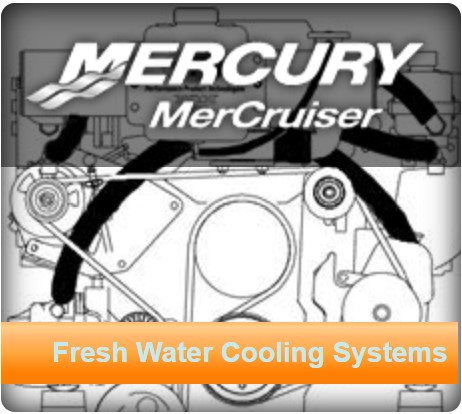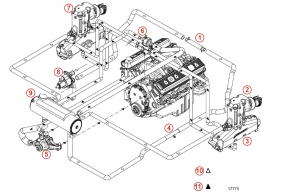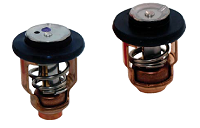Understanding the MerCruiser Cooling System
The MerCruiser Cooling System is a vital part of your boat’s engine. It keeps the engine from overheating, ensuring optimal performance and longevity.
Understanding this system is crucial for any boat owner. It helps you maintain your engine, troubleshoot issues, and make informed decisions about upgrades.
In this guide, we’ll delve into the MerCruiser Cooling System. We’ll explore its key components, how it works, and why it’s so important.
We’ll also provide practical tips for maintaining your cooling system. This includes how to inspect it, when to flush it, and how to troubleshoot common issues.
Whether you’re a seasoned boat owner or a newcomer to the marine world, this guide will equip you with the knowledge you need.
So, let’s dive in and demystify the MerCruiser Cooling System.
The Importance of the Cooling System in Your MerCruiser Engine

The cooling system in your MerCruiser engine plays a critical role in its operation. It prevents the engine from overheating, which can cause severe damage and reduce engine life.
By maintaining an optimal temperature, the cooling system ensures your engine runs efficiently. This leads to better fuel economy, improved performance, and less wear and tear on engine components. Understanding and maintaining your MerCruiser Cooling System is key to keeping your boat running smoothly.
Types of MerCruiser Cooling Systems
MerCruiser engines use two main types of cooling systems. These are the Closed Cooling System and the Raw Water Cooling System. Each system has its own unique features and
- The Closed Cooling System circulates coolant within the engine block and cylinder heads.
- The Raw Water Cooling System uses water from the surrounding environment to cool the engine.
Closed Cooling System
The Closed Cooling System, also known as a Fresh Water Cooling System, uses a heat exchanger. This device acts like a radiator, cooling the engine’s internal coolant by transferring heat to the external water. This system keeps the engine’s internal parts free from salt, debris, and corrosion, extending the life of the engine.
Raw Water Cooling System
In contrast, the Raw Water Cooling System, also known as a Sea Water Cooling System, directly cools the engine with water from the surrounding environment. This water is pumped through the engine, absorbing heat before being discharged overboard. While this system is simpler and less expensive, it exposes the engine to potential corrosion and scale buildup from saltwater and debris.
Key Components of the MerCruiser Cooling System
The MerCruiser Cooling System is made up of several key components. Each plays a crucial role in maintaining the engine’s optimal temperature. Understanding these parts can help you troubleshoot issues and perform effective maintenance.
- Heat Exchanger
- Thermostat
- Impeller and Sea Water Pump
Heat Exchanger
The heat exchanger is a vital part of the Closed Cooling System. It works like a car’s radiator, transferring heat from the engine’s coolant to the external water. This process keeps the engine’s internal parts at a safe operating temperature.
Thermostat
The thermostat regulates the flow of coolant based on the engine’s temperature. When the engine is cold, the thermostat restricts coolant flow, allowing the engine to warm up quickly. As the engine heats up, the thermostat opens to allow more coolant flow, preventing overheating.
Impeller and Sea Water Pump
The impeller and sea water pump are key components in both types of cooling systems. The impeller, located inside the sea water pump, draws water from the surrounding environment. This water is then circulated through the engine to absorb heat. Regular inspection of the impeller and pump is crucial, as wear or damage can lead to cooling system failure.
Understanding the 5.7 MerCruiser Cooling System Diagram
The 5.7 MerCruiser Cooling System Diagram is a valuable tool for understanding the flow of coolant in your engine. It provides a visual representation of how the various components interact to maintain the engine’s temperature.
By studying this diagram, you can gain a better understanding of the cooling process. It can also assist in troubleshooting, as you can trace the path of the coolant to identify potential problem areas. Whether you’re performing routine maintenance or addressing an issue, the 5.7 MerCruiser Cooling System Diagram is an essential resource.
Maintenance Tips for the MerCruiser Cooling System
Maintaining your MerCruiser Cooling System is crucial for the longevity and performance of your engine. Regular maintenance can prevent issues such as overheating, corrosion, and scale buildup.
Here are some key maintenance tasks to keep your cooling system in top shape:
- Regular inspection and flushing
- Winterizing and storage
Regular Inspection and Flashing
Regular inspection of your cooling system can help identify potential issues before they become serious problems. Look for signs of wear, leaks, or corrosion.
Flushing the system regularly is also important. It helps remove any debris or buildup that could hinder the flow of coolant.
Winterizing and Storage
If you’re storing your boat for the winter, it’s important to winterize the cooling system. This process involves draining the coolant, adding antifreeze, and properly sealing the system to prevent damage from freezing temperatures.
During storage, it’s also a good idea to periodically check the system for any signs of leaks or damage. This way, you can address any issues before you’re ready to hit the water again.
Troubleshooting Common Cooling System Issues
Even with regular maintenance, you may encounter issues with your MerCruiser Cooling System. Knowing how to troubleshoot these problems can save you time and money.
Common issues include:
- Overheating and coolant leaks
- Impeller wear or failure
Overheating and Coolant Leaks
Overheating is a common issue in cooling systems. It can be caused by a faulty thermostat, clogged passages, or low coolant levels. If your engine is overheating, check these components first.
Coolant leaks are another common problem. Look for puddles of coolant under your boat or traces of coolant on the engine block.
Impeller Wear or Failure
The impeller is a key component of the cooling system. If it’s worn or damaged, it can’t pump coolant effectively.
Signs of impeller failure include overheating, poor engine performance, or visible damage to the impeller itself. If you suspect impeller failure, it’s best to replace it immediately to prevent further engine damage.
Upgrading to a Fresh Water Cooling System for MerCruiser
If you’re running a raw water cooling system, consider upgrading to a fresh water system. This can enhance your MerCruiser engine’s longevity and performance.
A fresh water system reduces the risk of corrosion and scale buildup. It’s a worthwhile investment, especially if you frequently operate in saltwater or brackish environments.
Conclusion and Next Steps
Understanding the MerCruiser Cooling System is key to maintaining your boat’s engine health. Regular inspections, timely maintenance, and upgrades can significantly enhance its performance.
If you’re facing complex issues, don’t hesitate to consult a certified MerCruiser technician. They can provide expert guidance and ensure your cooling system operates at its best.



